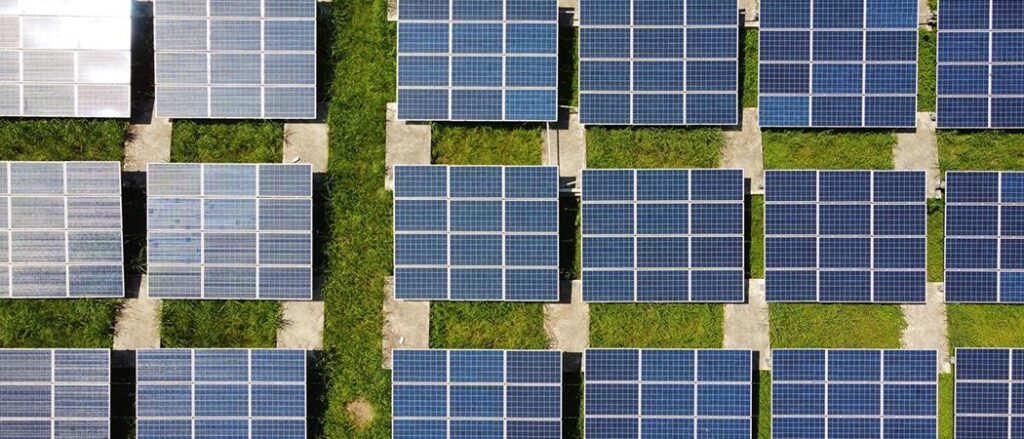Solar power, harnessed through solar modules, stands out as one of the most viable solutions to transition away from fossil fuels and reduce our carbon footprint. As technological advancements continue to improve the efficiency of solar modules, they are increasingly becoming a key player in shaping the future of sustainable energy generation.
Over the years, solar modules have evolved from their humble beginnings, and today, they stand as the leading power in the sustainable energy sources.
In this blog, we’ll explore the developments in solar module efficiency and their implications for our sustainable energy future.
The Solar Module Revolution
Solar modules, also known as Photovoltaic (PV) panels, have evolved drastically since their discovery. The early solar panels were basic and inefficient, converting only a small percentage of sunlight into electricity. However, over the decades, substantial progress has been made in enhancing their efficiency, making them more accessible and economically viable for widespread adoption.
For further information, have a look at the attached blog
EFFICIENCY OF DIFFERENT SOLAR MODULES
Advancements in Solar Cell Technologies :
The efficiency of solar modules primarily depends on the efficiency of solar cells, the building blocks of these modules. Traditional silicon-based solar cells have seen improvements in their efficiency, with the development of multi-junction cells, which can capture a broader spectrum of sunlight, increasing overall efficiency.
- Thin-Film Solar Modules :Thin-film solar modules have emerged as a promising alternative to traditional crystalline silicon panels. These modules are lighter, more flexible, and can be combined into a wider range of applications. While they may have lower efficiency compared to silicon-based panels, ongoing research and development aim to close this efficiency gap.
- Tandem Solar Cells : Tandem Solar Cells are the combination of multiple layers of solar cells with different absorption properties, which have the potential for higher efficiencies. With the help of the multiple layers, tandem cells have increased energy conversion rates.
- Perovskite Solar Cells : By technological advancements, perovskite solar cells have seen rapid efficiency improvements. These cells are the game – changer due to the inexpensive production, impressive performance gains, and highly efficient solar energy conversion.
- Bifacial Solar Panels : Bifacial solar panels are the cells, which can capture sunlight from both sides, increasing their efficiency by utilizing reflected light from surrounding surfaces. This innovation allows for higher energy yields without significantly increasing the size of the panel.
Working of the Bifacial Solar Panel
Link : https://www.saurenergy.com/solar-energy-blog/explained-bifacial-solar-panel-and-everything-you-need-to-know-about-it
Efficiency’s Role in the Future of Solar Energy :
The continuous improvement in the efficiency of solar modules holds profound implications for the future of clean energy:
Benefits of Solar Energy
Link : https://freyrenergy.com/4-reasons-to-switch-to-solar/
- Reduced Costs : As compared to the traditional solar panels, the new advanced technologies solar panels are highly efficient, producing more energy. As energy production increases, the per watt cost reduces indicating the inverse relation between them. Hence, solar energy is giving tough competition to the traditional sources i.e., fossil fuels.
- Increased Energy Access : The remote and off – grid communities have access to reliable electricity due to the improved solar efficiency. As the efficiency increases gradually, the production can be supported by fewer modules cutting down the installation and maintenance cost.
- Urban Integration : Modern problems require modern solutions. Solutions like solar facades, Building – Integrated Photovoltaics (BIPV), solar roadways, etc., can blend into our daily lives, reducing our dependence on centralized power grids working on fossil fuels. With advancements in technology solar panels have become more efficient and flexible, and can be integrated into urban infrastructure seamlessly.
Solar Facades
Link : https://gasthome.com/product/passive_solar_cell_facade/
- Environmental Benefits : Unlike other energy sources, solar power doesn’t produce any greenhouse gas emission during operation, hence considered as a clean and renewable energy. Improved efficiency leads to improved benefits such as reduced carbon footprints.
Challenges and Considerations :
While the efficiency of solar modules continues to improve, there are challenges to address:
- Environmental Impact of Production : The production of solar panels involves various materials and processes that can have environmental consequences. Sustainable manufacturing practices and recycling programs will be crucial to mitigate these impacts.
- Energy Storage : Solar energy generation is intermittent, depending on weather conditions and daylight hours. Efficient energy storage solutions are essential to ensure a stable and consistent power supply.
Environmental Impact on Solar Panels
Link : https://renergyinfo.com/impact-of-different-weather-conditions-on-solar-panels/
- Integration into the Grid : The integration of solar power into existing energy grids presents technical and regulatory challenges. Grid management and storage solutions need to be upgraded to accommodate the growing share of solar energy.
Conclusion :
Solar power is not just a future solution : it’s here today, playing a pivotal role in reducing greenhouse gas emissions. The future of solar modules is at the core of the greener, more sustainable world. Let’s embrace this transformation with SafEarth and harness the power of the sun towards a brighter future.
Join our SafEarth marketplace to explore your options and buy your solar system from qualified installers in your area to make the switch easy and hassle free.

